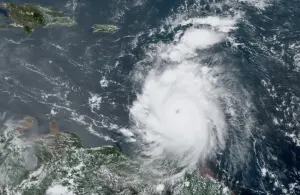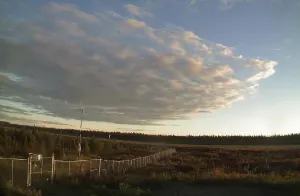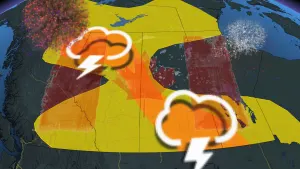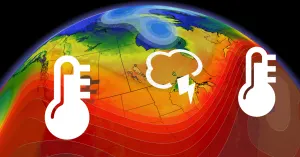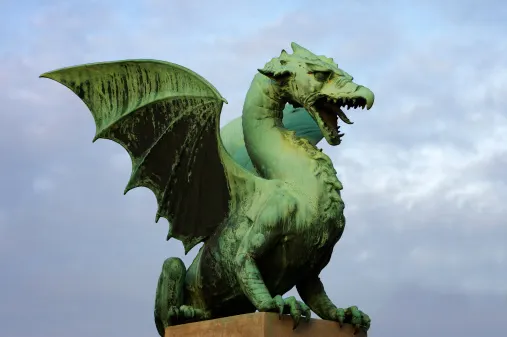
These real-life places inspired Game of Thrones
The final season of Game of Thrones will premiere Sunday.
Game of Thrones has had an impressive run. Over the past seven seasons it's won countless awards and catapulted its talented cast into superstardom.
Now, with the final season about to kick off, we're taking a look at some of the real-life countries (and climates) that inspired this ground-breaking show.
GAME OF THRONES REGION: The Dothraki Sea
NOTABLE CHARACTERS: Khaleesi, Khal Drogo
MOST COMPARABLE TO: Mongolia, North American Great Plains
The Dothraki Sea is a dry grassland on Essos inhabited by the Dothraki people who live in in hordes called khalasars, each of which is led by a chief called a khal.
According George R. R. Martin, the mastermind behind the Game of Thrones series, The Dothraki were fashioned after a number of cultures – one of them being Mongols.
From a climatological standpoint, one could argue that the Dothraki sea represents a drier version of Mongolia.
VIDEO: GAME OF THRONES THRONE FOUND IN B.C.:
Both climates contain steppes – i.e., large areas of flat, unforested grasslands typically found in Siberia.
Mongolia, for example, is home to the Manchurian steppe which is not unlike the plains where the Dothraki and their horses go to war.
"I would say the Dorthraki region is also comparable to the Eurasian steppe, where temperate grasslands meets savannas meets shrubland," says Weather Network meteorologist Dayna Vettese.
"Vast stretches of uninhabited grasslands are very similar to that of the Eurasian steppe."
Meteorologist Gina Ressler agrees.
"The Dothraki Sea is inspired by places like the North American Great Plains or the Eurasian Steppes," she told The Weather Network in 2015.
"These types of climates are semi-arid (dry), and typically found in continental interiors some distance from large bodies of water. In Canada, the Dothraki Sea is comparable to the dry prairie regions in southern Alberta and southern Saskatchewan, sometimes called Palliser's Triangle. Try to imagine the landscape before permanent settlements developed."
GAME OF THRONES REGION: Beyond the Wall
NOTABLE CHARACTERS: John Snow, Mance Rayder
MOST COMPARABLE TO: Northern Canada
While this portion of the show was filmed in Iceland, the Land of Always Winter is probably more comparable to northern Canada, according to Martin.
Although he has never visited Iceland, he once said that the fictional region is “considerably larger than Iceland — probably larger than Greenland,” adding that the “area closest to my Wall is densely forested, so in that sense it's more like Canada — Hudson Bay or the Canadian forests just north of Michigan.”
RELATED: 'Game of Thrones' mega-wall forms in Newfoundland
So there you have it: While Atlantic Canada may feel like the land of always winter it isn’t – at least not as far as Game of Thrones is concerned.
GAME OF THRONES REGION: The Free City of Braavos
NOTABLE CHARACTERS: Syrio Forel
MOST COMPARABLE TO: Venice, Belgium, the Bahamas
The fictional City of Braavos is spread out over hundreds of tiny islands linked together by canals and bridges in northwestern Essos.
It’s a seafaring region known for water dancing, a variation of sword fighting.

Photo courtesy: Wikipedia
In terms of culture and appearance, Braavos bears resemblance to Venice, but according to the Game of Thrones Wiki, “in terms of climate and weather, it is more akin to northern European cities like Amsterdam. All-in-all Bruges [Belgium] (one of the places often referred to as "the Venice of the North") would be a good match.”
"You could argue that Braavos is also similar to the Bahamas, as it is a tropical Savannah," says Vettese. "Temperatures are always above the freezing mark."
GAME OF THRONES REGION: The North
NOTABLE CHARACTERS: House Stark
MOST COMPARABLE TO: Scotland, Northern Ireland, Alberta, northern Quebec
The North is home to Winterfell, the castle that houses the Starks. It’s built over a natural hot spring that sends water through the walls, warming the rooms.
Season 1 of the show shot Winterfell in Northern Ireland, but the show’s set designer said that it is based on a Scottish castle.
Ressler sees a Canadian connection as well.

Photo courtesy: Flickr CC / lju photo
"The North has a cold continental climate with rugged terrain, including forests and mountains. In Canada, this might be similar to northern Alberta or northern Quebec," she says.
"Martin himself has compared it to Scotland. Summers can be pleasant, but when harsh winters occur, The North feels the brunt of it with powerful snowstorms and frigid temperatures. Many Canadians can relate to this type of climate."
Speaking of Europe, parts of the continent have seen some extreme weather recently -- which would have been a challenge for House Stark, given the limited drainage systems in the Game of Thrones universe.
RELATED: Game of Thrones fans swarm B.C. town
"Climate records indicate that the 2013/2014 winter was the wettest winter Scotland saw in over 100 years and the second wettest winter in Northern Ireland since 1910," says Weather Network meteorologist Monica Vaswani.
"There were numerous significant flooding events as well and dangerous sea conditions along coastal areas as a result of at least 12 major winter storms that pounded the region."
Imagine the amount of damage those storms would cause in the North.
GAME OF THRONES REGION: King's Landing
NOTABLE CHARACTERS: Joffrey Baratheon, Cersi Lannister
MOST COMPARABLE TO: Medieval Paris, London, New York City
King's Landing has a walled-in main city, dominated by three hills. With a population of about 500,000, the city is populous but it considered unsightly. Martin has compared the region to medieval Paris or London.
"King's Landing, located farther south that Winterfell, possesses a temperate climate," Ressler says.
"Summers are warm, and winters are cool but not frigid. King's Landing is near the ocean, but is far enough inland to likely experience a humid continental climate, which could be comparable to New York City."
DON'T MISS: Our country is warming two times faster than the rest of the planet. The Weather Network and Canada's leading experts on climate bring you 2xFaster, an exclusive series premiering Tuesday, April 16.







